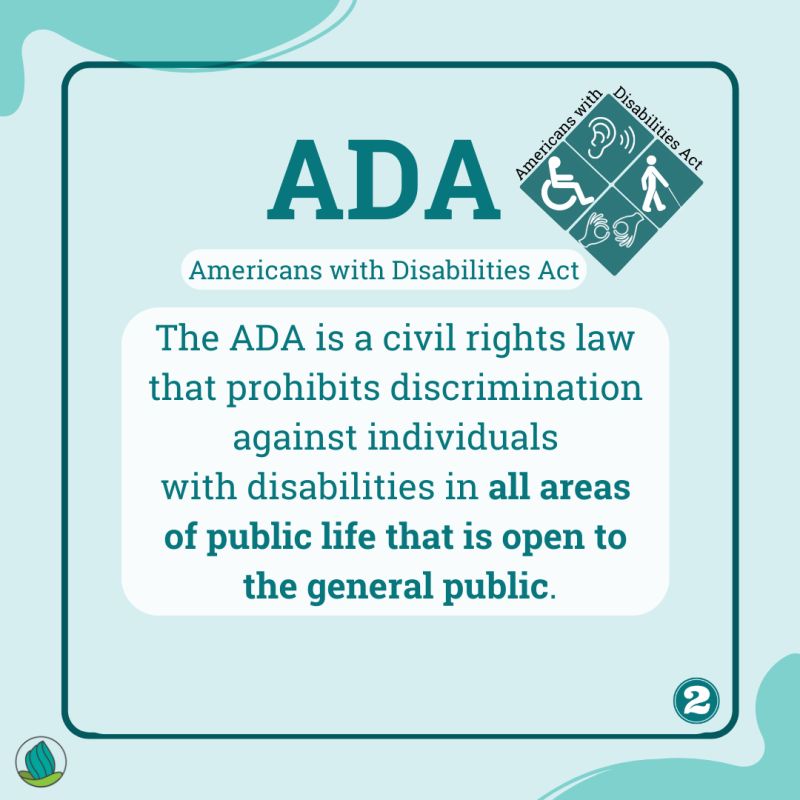
In the present day DEI age of accessibility, there is no reason Deafness should stand in the way of individuals applying for jobs — or fulfilling their occupational responsibilities once hired. Research suggests that only 3.7% of people self-identify as having a disability and are comfortable sharing special needs with their employers.
HR administrators and DEI directors are able to bridge communication gaps for the Deaf community by creating a more inclusive workplace culture. They are responsible for providing every employee with equal access and equal employment opportunity.
"Our mission is to achieve a world where Deaf people are valued. Not just included for access, but actually valued. They’re sought out. We are bringing something unique — a unique lens, a unique perspective of the world."
- Chris Soukup, CEO of Communication Services for the Deaf (CSD)
Making organizations more accessible and inclusive expands talent pools and enables Deaf and hard-of-hearing employees to reach their full potential. Proper accommodations for all employees — with a disability or otherwise — promotes better team communication and creates a work environment for all to succeed.
Let’s make it possible for everyone to thrive in the workplace.
Recruiting Deaf and Hard-of-Hearing Employees
Job Advertisement
- Let prospective applicants know that you champion equality and diversity in the workplace and will support them in reaching their full potential.
- In your job listing, include a section that entails the support services you are prepared to offer such as assistive tech, workplace modifications, etc.
- Always provide an alternative contact method for people with hearing loss who may prefer not to use the phone – for example, an email address, a phone number for messaging, or a captioning service.
Streamline the Application Process
To make your application process accessible for people who are Deaf or hard-of-hearing, take a flexible approach:
- Make it clear that you offer communication support at interviews, if required, including a sign language interpreter or speech-to-text reporter.
- Ensure the application process is fully accessible, and easy for individuals where English may be a second language.
- Consider offering a job trial as part of the recruitment process. Trials give applicants a chance to demonstrate their skills in a practical way, rather than having to go through a formal recruitment process that might be inaccessible to them.

Source: National Deaf Center
The Interview
As an HR administrator, it is your obligation to fulfill ADA compliance rules. To do so, make reasonable adjustments to ensure that candidates who are Deaf or hard-of-hearing are not at a disadvantage during the recruitment process.
- Before inviting a candidate to an interview, ask them if they will require any adjustments or need specific accommodations.
- Finding out about communication needs and ensuring necessary arrangements ahead of the interview will give candidates who are Deaf or hard-of-hearing the best chance to demonstrate their ability for the position.
- If communication support is needed, book the service as early as possible.
- On the day of the interview, be prepared with your planned interview questions on paper for the interviewee, in case it may be of better assistance to the candidate.
- Choose a quiet place that is conducive to communication.
- If a sign language interpreter is needed, remember to address questions to the candidate, not to the interpreter.
Making a Job Offer
Encourage successful candidates to share information on their disability or health condition that may impact their work when making a job offer.
- Repeat the message that your organization values diversity and provides equal support for all employees.
- Do not to ask the candidate whether their Deafness or hearing loss will mean they cannot do the job, rather ensure that they are capable of fulfilling the duties of the position and make note of the necessary accommodations.
- Do not assume that a person with hearing loss knows what adjustments they might need. Be prepared to suggest accommodations that might be helpful. Often, simple and low-cost adjustments can make a big difference.
Onboarding Tips for Deaf and Hard-of-Hearing Employees
- Once the employee has started, check that all accommodations are in place, or ask if any more are needed. Defer to the employee’s preferences.
- Give coworkers the opportunity to learn communication skills to support their new colleague and other existing and future colleagues, who may be Deaf or hard-of-hearing.
- Keep in mind that new employees may be interested to meet other Deaf or hard-of-hearing people within the organization. Make introductions where possible.
- If your employee will be using a sign language interpreter, factor in the need to seat an additional employee, and ensure they are in a well-lit area.
Providing Accessible Accommodations
It is the job of the HR administrator or DEI director to ensure ADA guidelines are followed. According to ADA laws, providing necessary accommodations for fair and equal treatment are required to allow Deaf and hard-of-hearing employees the same opportunities as their fellow employees.

Source: National Deaf Center
Don’t fear the price tag of providing this vital support. Many adjustments are easy to implement and are often free or inexpensive. Simple practices that improve a work environment and create a user-friendly setting may include: offering flexible work hours, or providing assistive technology.
There are a wide range of products and technology that can help remove barriers in the workplace for people who are Deaf or hard-of-hearing. To establish a successful work environment, consider these accommodations:
Assistive Technology
- Inductive Loop systems
- FM systems
- Soundfield systems
- Infrared systems
- CART (Communication Access Realtime Translation)
Ad Hoc Communications
- Written transcripts, presentations, notes, or summaries of various company communications helps Deaf and hearing employees alike.
- Using stickies or other easy-to-read notes are a friendly and informal way for employees to share quick messages.
- Texting and writing emails are quick, efficient ways to get work done.
Live Captions
Live caption solutions provide access to any conversation, audio and video, regardless of where it exists: mobile or desktop, live or recorded, online or offline, in person or remote. For organizations who have transitioned to remote or hybrid work environments since the onset of the pandemic, captions are more important than ever. For the Deaf and hard-of-hearing communities, it takes the guesswork out of group conference calls, and is key to workplace inclusion and accessibility.
Caption software providers like Ava assist Deaf and hard-of-hearing people and inclusive organizations with real-time transcripts and online captions.
Ava empowers Deaf & hard-of-hearing people and inclusive organizations with a fast and accurate live captioning solution for optimal communication.
Source: YouTube
Ava Live Captions can be integrated into Zoom, Meet and Teams, as well as RingCentral Meetings, GoToMeeting, and others, so employees can comfortably follow along in conversation.
Other Workplace Accommodations:
- Video relay services (VRS)
- Digital recorders enable Deaf and hard-of-hearing individuals to record meetings and presentations so they can listen and watch them at a later time. In some cases, the recordings can be annotated.
How To Create an Inclusive Work Environment
Give your employees the confidence and skills they need to communicate with colleagues who are Deaf or hard-of-hearing. Make a point of explaining and embracing communication efforts throughout the organization and consider ways to engage hearing employees. To create an inclusive work culture, here are some tips:
- Inform your future employee’s team that a new Deaf or hard-of-hearing employee will be joining the organization.
- Provide them with a list of communication tips to make interactions easier.
- Encourage employees to prepare for meetings in advance in case extra equipment or additional accommodations need to be provided.
- At group meetings, help team members remember to be mindful of taking turns when speaking to make it easier for Deaf and hard-of-hearing individuals to follow along.
- Make your online meetings and webinars accessible. Using apps that provide captions, like Ava, are helpful.
- Offer employees the opportunity to learn basic sign language terms. Oftentimes, a small gesture can go a long way in making coworkers feel more welcomed and it can also improve professional relationships.
- Make sure all employees include Deaf and hard-of-hearing coworkers in social events, group gatherings, or other office discourse.
- Improve the acoustics in the office (carpets, acoustic panels, eliminating background noise when possible).
- For meetings, use good lighting to help everybody see each other clearly, which is important for lipreading.

Source: National Deaf Center
Workplace Communication Tips
- If someone is using a hearing aid, always ask if they need to lipread.
- Face the person you are talking to, so they can see your lip movements.
- Make sure you have the person’s attention before you begin to speak. If the individual does not respond, use a different visual signal, or tap them on the shoulder.
- Speak clearly, not too slowly, and use facial expressions and gestures.
- Avoid covering your mouth when communicating and try to maintain eye contact.
- Keep your voice down. It can often be uncomfortable for a hearing aid user if you shout, and may also appear to be unintentionally aggressive.
- For longer conversations, find a place to talk with good lighting, away from noise and distractions.
- If the individual is having a hard time understanding you, use a pen and paper to jot down your words.
- Be considerate. If you are talking to one person with hearing loss and one without, focus on both individuals.
Deaf Awareness Resources
- National Association of the Deaf (NAD): A civil rights organization working for the Deaf and hard-of-hearing community, NAD provides access to resources and information on many topics.
- Hearing Loss Association of America (HLAA): The HLAA provides advocacy, information, and education to the Deaf community. They host events, provide resources, and run outreach programs to inform and support. In addition, they have a series of videos on Assistive Technology.
- Society for Human Resources Management (SHRM): The SHRM’s goal is to create better workplaces where employers and employees can thrive together. They provide resources to help advance HR practices and maximize employees’ potential, and focus on workplace issues.

Source: National Deaf Center
Growing Deaf Employment Accessibility & Inclusivity Together
Deaf awareness for Deaf employment and Deaf success continues to grow around the world. As companies and organizations become more inclusive and accessible for the Deaf community, it helps to have a playbook or guide for the hiring and onboarding process.
Ava and organizations such as CSD share an aligned mission to empower the Deaf and hard-of-hearing community, which entails removing communication barriers with hearing people. Together, we strive for a more inclusive work environment and invite others to join the movement for greater accessibility.




